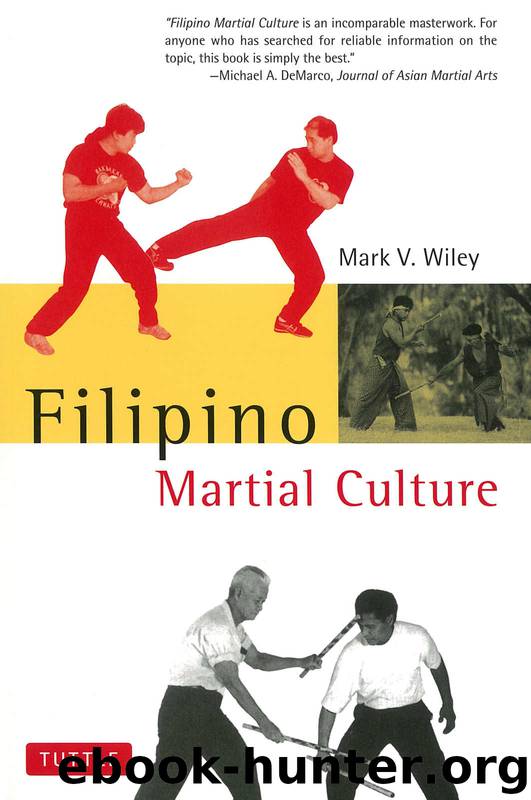Filipino Martial Culture (Martial Culture Series) by Wiley Mark V

Author:Wiley,Mark V.
Language: eng
Format: azw3, epub
ISBN: 9780804820882
Publisher: Tuttle Publishing
Published: 2011-12-20T05:00:00+00:00
Rey Galang moved to Sydney, Australia in 1975. There he established a club at the YMCA. He was teaching sagasa kickboxing and some sikaran-based material, as well as Balintawak arnis. Galang also began teaching kali Ilustrisimo although at that time he was still in his early years in the art. The Filipino martial arts were well received in Australia and grew to a point where he had a chance to demonstrate for Kyokushin-kai karate founder Masutatsu Oyama, in 1976. It was while in Australia that Galang was appointed to the position of officer in the Australian Ju-Jitsu Federation and also associated with members of the Federation of Australian Karate Organization. He was also a visiting instructor at Tom Slaven's kempo karate school. Galang also befriended noted tai chi chuan expert, Earle Montaigue, when he was in his early years.
After Ray established a Bakbakan branch in Sydney, he started organizing seminars to further perpetuate the Filipino arts. One of the first seminars sponsored by Bakbakan was called the "Master of Arnis." The seminar featured instruction by Ray Galang, Christopher Ricketts, Tony Diego, and Edgar Sulite. "On the first day of the seminar, which was held in my club," remembers Galang, "Raymond Floro knocked on my door and introduced himself as a student of Balintawak arnis Master Tony Dedal. He said that he was advised to come in to broaden his horizons. We welcomed him and Raymond has not left the Bakbakan group since. In fact, he is an active kali Ilustrisimo instructor. The art that was popular at that time," adds Ray, "was Remy Presas' modern arnis. Most of our Australian students came from modern arnis but have since given their loyalties to Bakbakan. Remy Presas appointed me as commissioner for modern arnis in Australia in the mid 1970s but I declined due to my commitment to Bakbakan International and kali Ilustrisimo."
Through the efforts of Ray Galang the image of the Bakbakan group went from a basic roughness to tough with a touch of class. He has helped to design and print new logos and uniforms, and produce instructional manuals and video tapes. His current efforts are directed toward improving Bakbakan's quarterly publication, Phoenix.
Download
Filipino Martial Culture (Martial Culture Series) by Wiley Mark V.epub
This site does not store any files on its server. We only index and link to content provided by other sites. Please contact the content providers to delete copyright contents if any and email us, we'll remove relevant links or contents immediately.
Born to Run: by Christopher McDougall(7047)
Bodyweight Strength Training Anatomy by Bret Contreras(4596)
Dynamic Alignment Through Imagery by Eric Franklin(4099)
Men's Health Best by Men's Health Magazine(2536)
The Coregasm Workout by Debby Herbenick(2208)
Starting Strength by Rippetoe Mark(2056)
Relentless by Tim S Grover(2032)
Core Performance Essentials by Mark Verstegen(1973)
Bigger Faster Stronger by Greg Shepard(1936)
Endure by Alex Hutchinson(1934)
Weight Training by Thomas Baechle(1730)
Relentless: From Good to Great to Unstoppable by Tim S Grover(1640)
The Stretching Bible by Lexie Williamson(1542)
Practical Programming for Strength Training by Mark Rippetoe & Andy Baker(1509)
The Spartan Way by Joe De Sena(1507)
Good to Go by Christie Aschwanden(1432)
Dr. Jordan Metzl's Running Strong by Jordan Metzl(1369)
The Art of Throwing by Amante P. Marinas Sr(1343)
Total Hockey Training by Sean Skahan(1338)
